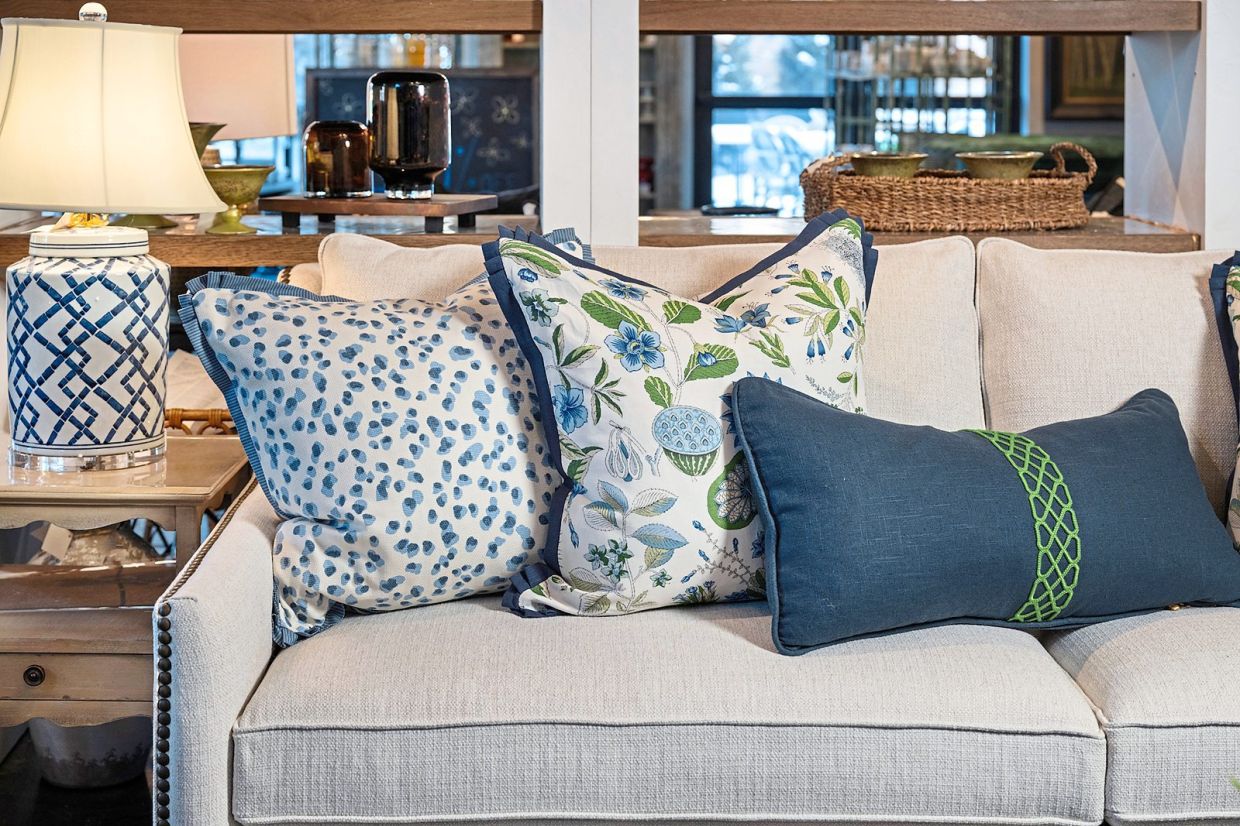Incorporating different textures alongside your patterns helps to create a rich and inviting room. Photos: Handout/TNS
As we enter the second quarter of the year, it’s the perfect time to refresh our living spaces with vibrant patterns and fresh fabrics. Fabrics offer a plethora of options to infuse colour and personality into your home decor. From soft pastels to bold florals, the possibilities are endless.
It can seem daunting at first, but with a little creativity and guidance, mixing patterns can transform a room into a lively and dynamic space.
Start with a focal pattern
Choose one standout pattern as the focal point of your room design. This could be a large-scale chinoise, a bold geometric print, or an intricate damask. Once you have your focal pattern selected, you can then layer in other patterns to complement and enhance it.
Selecting a focal pattern is a pivotal step when it comes to pattern mixing in interior design. Your focal pattern serves as the anchor of your room’s aesthetic, setting the tone for the entire space.
When choosing a focal pattern, consider selecting one that speaks to your personal style and reflects the mood you want to create in the room. This could be a bold floral print that adds a touch of whimsy, a classic stripe that exudes timeless elegance, or a vibrant geometric pattern that injects a modern flair.
The key is to choose a focal pattern that resonates with you and sets the stage for the rest of your design.
Once you’ve selected your focal pattern, use it as a guiding force when selecting complementary fabrics and patterns for the room. Your focal pattern will dictate the colour palette and overall style direction of the space, so be sure to choose fabrics that complement and enhance its aesthetic.
Consider incorporating fabrics with coordinating colours or complementary patterns that play nicely with the scale and style of your focal pattern. By selecting a focal pattern and building your design around it, you can create a cohesive and visually appealing space that reflects your unique sense of style.
Use solids as grounding elements
Solid colours act as anchors amidst a sea of patterns, providing visual relief and preventing the room from feeling overly busy or chaotic. Incorporating solid colours into your pattern mixing can help ground the space and prevent it from feeling too overwhelming to the eye. Solid coloured pillows work as lovely companions to their patterned counterparts without stealing the spotlight. Using solid fabrics on your pillows also allows you the opportunity to further customise them to your taste with various tapes and trims. Your pillows aren’t the only place to incorporate solids for a well-balanced design. You could use solid-coloured furniture pieces, rugs, or draperies to break up the patterns and provide visual relief.
Texture is a pattern too
Textural fabrics, though often one single colour, do also offer another pattern option and can add another layer of interest to your pattern mixing.
Incorporating different textures alongside your patterns helps to create a rich and inviting room. Mix in textured fabrics like velvet, linen, boucle, or faux fur to add depth and dimension to your space without getting too pattern-crazy.
Consider scale when pattern mixing
One of our favourite ways to mix patterns is by incorporating different scales – for instance pairing large-scale florals with smaller geometric prints or classic stripes can create a visually stimulating and harmonious composition.
When it comes to mixing patterns in interior design, considering scale is crucial to achieving a harmonious and visually pleasing result. Scale refers to the size of the patterns relative to each other and the overall size of the room.
A general rule of thumb is to mix patterns of varying scales to create visual interest without overwhelming the space. For example, pairing a large-scale floral print with a smaller geometric pattern can create a dynamic contrast that adds depth and dimension to a room.
Similarly, incorporating patterns of similar scales can create a cohesive and balanced look, especially in smaller spaces where too many large-scale patterns may feel overwhelming.
There is something to be said though, of bending or breaking the “rules” and mixing all small-scale patterns, or pairing stripes with more stripes to achieve different looks – all can be done in a tasteful way to achieve just the right look and feel!
Stick to a cohesive colour palette
And our final tip of the day is an underrated, but exciting way to mix patterns. One way to ensure that they mix harmoniously is to stay within the same colour family when selecting your fabrics and finishes. By sticking to a cohesive colour palette, you can prevent the space from feeling disjointed or overwhelming, allowing the patterns to coexist harmoniously while still adding visual interest.
Colour palettes can be made of soft, quite neutrals or loud, bold colours. or anything in between – all of them can guide you as you play with patterns for your spaces.
Incorporating pattern mixing and spring fabrics into your home decor is all about embracing creativity and expressing your personal style. Don’t be afraid to experiment with different combinations and have fun with the process.
Whether you’re drawn to bold and eclectic designs or prefer a more subtle and understated look, there’s no wrong way to infuse your home with fresh charm. – Tribune News Service









